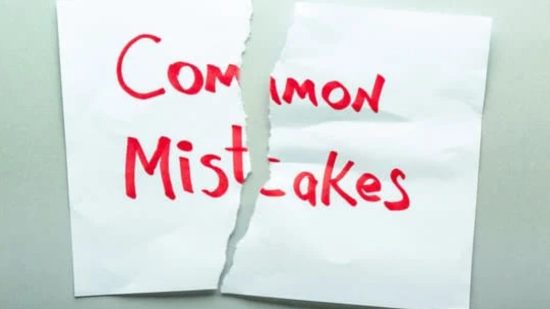Are you ready to embark on a new professional journey? Whether it’s for personal growth or seeking greener pastures, the time has come to bid farewell to your current job. But before you pack up your desk and walk out the door, there’s one important task that awaits: writing a resignation letter. Don’t worry, we’ve got you covered!
In this blog post, we’ll guide you through the art of crafting a stellar resignation letter that leaves a lasting impression while maintaining professionalism. So grab your pen and paper because it’s time to learn how to write a resignation letter like a pro!
What is a Resignation Letter?

A resignation letter is a formal document that an employee writes to notify their employer of their intention to leave the company or organization. It serves as a professional and respectful way to officially declare one’s decision to resign from their position.
A well-crafted resignation letter outlines the employee’s departure date, expresses gratitude for the opportunities and experiences gained in the role, and may provide a brief explanation for the resignation if desired.
It is important to maintain a positive and professional tone throughout the letter, emphasizing appreciation for the time spent with the company and the relationships built. A resignation letter not only acts as a courtesy to inform the employer but also serves as a record of the employee’s intent to leave, which can be referred to in the future.
What to Include in a Resignation Letter?
When writing a resignation letter, it’s important to include certain key elements that will make your intentions clear and maintain professionalism. Here are some essential things to include:
- Date: Start by including the date at the top of your resignation letter.
- Recipient’s Information: Include the name and position of the person or department your letter is addressed to.
- Salutation: Begin with a formal salutation, such as “Dear [Recipient’s Name].”
- Statement of Resignation: Clearly state in one sentence that you are resigning from your position.
- Notice Period: Mention the amount of notice you are giving, which is usually two weeks but can vary depending on company policy or employment contract.
- Gratitude and Appreciation: Express gratitude for any opportunities or experiences gained during your time with the company.
- Offer Assistance with Transition: Let them know that you are willing to assist in transitioning tasks or training someone new before leaving if necessary.
- Contact Information: Provide updated contact information so they can reach out if needed after you leave.
- Closing Remarks and Signature: End on a positive note with closing remarks, followed by your signature and printed name.
Including these elements will help ensure that your resignation letter is professional, concise, and respectful of both parties involved in this transition period.
How to Write a Resignation Letter?

Writing a resignation letter is a professional and courteous way to inform your employer that you are leaving your job. Here’s a guide to writing a resignation letter:
1. Format and Structure:
- Header: Include your name, address, phone number, and email address at the top of the letter. Follow this with the date.
- Recipient’s Information: Below the date, include the name, job title, company name, and address of your employer.
- Salutation: Use a formal salutation at the beginning of the letter, like “Dear [Supervisor’s Name],”
- Body: Keep the letter brief and to the point. State your intention to resign and provide a brief reason if you’re comfortable sharing it. Thank the company for the experiences and opportunities you have had while working there.
- Closing: Conclude the letter professionally. For example, “Sincerely,” or “Best regards,” followed by your signature.
2. Be Positive and Professional:
- No matter why you’re leaving, keep your attitude upbeat. Don’t assign blame or offer criticism to anyone in the letter.
- Express gratitude for the opportunities you get and the experiences you’ve had with the company.
3. State Your Intentions Clearly:
- Make it quite clear that you are leaving your job. Include your intended last working day, typically giving at least two weeks’ notice.
4. Offer Assistance:
- Express your willingness to help with the transition. You might offer to train a replacement or assist in any way during the handover period.
5. Keep It Concise:
- Your resignation letter should be concise and focused. Avoid including extended explanations and extraneous details.
6. Keep It Professional:
- Even if you have had issues with your job or colleagues, a resignation letter is not the place to air grievances. Maintain a professional and positive tone.
| Steps | Instructions |
| Format and Structure |
|
| Be Positive and Professional |
|
| State Your Intentions Clearly |
|
| Offer Assistance |
|
| Keep It Concise |
|
| Keep It Professional |
|
Sample Resignation Letter Template

When it comes to writing a resignation letter, having a template can be incredibly helpful. It provides you with a structure and format that ensures your letter is professional and concise. While the content of your resignation letter will vary depending on your specific circumstances, here is a sample template to guide you:
[Your Name]
[Your Address]
[City, State, ZIP Code]
[Email Address]
[Phone Number]
[Date]
[Recipient’s Name]
[Recipient’s Position/Title]
[Company/Organization Name]
[Company/Organization Address]
Dear [Recipient’s Name],
First paragraph: Begin by stating clearly and succinctly that you are resigning from your position at the company or organization. Include the effective date of your resignation.
Second paragraph: Express appreciation for the opportunities and experiences gained during your time with the company or organization. Highlight any specific achievements or skills acquired.
Third paragraph: Offer Assistance in transitioning out of your role smoothly. Mention any ongoing projects or responsibilities that need to be handed over.
Fourth paragraph: Convey gratitude for the support received from colleagues and supervisors throughout your employment tenure.
Final paragraph: End on a positive note by expressing well wishes for the future success of the company or organization.
Sincerely,
[Your Name]
Remember to customize the letter based on your situation and relationship with your employer. It’s always a good idea to proofread the letter before submitting it to ensure clarity and professionalism.
Common Mistakes to Avoid in a Resignation Letter

Writing a resignation letter can be an emotional and delicate task. It’s important to handle the process with professionalism and care. To ensure that your resignation letter is effective, there are certain common mistakes that you should avoid.
- Avoid expressing negative emotions or grievances; instead, focus on gratitude for opportunities and maintain a positive tone.
- Be clear about your departure date to help your employer plan effectively. Providing sufficient notice demonstrates professionalism and avoids any negative impact on your reputation.
- Include essential details, such as offering Assistance during the transition. Express your willingness to help train a replacement, showcasing consideration for your team.
- Lastly, proofread your letter carefully. Spelling or grammatical errors can undermine credibility, so take the time to review and ensure a polished final product.
By avoiding these common mistakes, you’ll increase the effectiveness of your resignation letter and leave a positive impression as you transition out of your job.
The Importance of Giving Notice and Transitioning Out of Your Job
Giving notice and transitioning out of a job in a thoughtful and professional manner is of utmost importance. It demonstrates respect for your employer, colleagues, and the overall work environment.
Providing sufficient notice allows the company to plan for your departure, find a suitable replacement, and ensure a smooth transition of responsibilities. It also shows your commitment to completing any ongoing projects or tasks and helps maintain productivity during the transition period.
Transitioning out of a job effectively includes documenting important information, creating clear handover instructions, and offering support to colleagues who will continue the work.
Taking these steps not only benefits the organization but also helps preserve professional relationships and leaves a positive impression, which can be valuable for future references and networking opportunities.
Conclusion
In conclusion, writing a resignation letter may seem intimidating, but it is an important step in leaving your job on a positive note. Remember to be professional, concise and polite in your letter. Express gratitude for the opportunities and experiences gained during your time at the company and offer to help with the transition process.
By following these steps, you can ensure that your resignation letter leaves a good impression and maintains positive relationships with your colleagues and employer.
FAQs – How to Write a Resignation Letter?
Why do I need to write a resignation letter?
A resignation letter is a professional way to inform your employer that you will be leaving your current position. It helps maintain a positive relationship with your employer and shows professionalism and respect for the company.
When should I submit my resignation letter?
As soon as you have decided to quit your work, you should turn in your resignation letter. It’s typically best to give at least two weeks’ notice to allow your employer time to find a replacement and plan accordingly.
What should not be included in a resignation letter?
Avoid including any negative or personal comments about your employer, coworkers, or the company. It’s important to keep your resignation letter professional and focused on the main purpose of resigning.
Should I mention the reason for resigning in the letter?
While it’s not necessary to go into great detail, mentioning a brief and positive reason for resigning can help provide closure and maintain a good relationship with your employer. However, it’s entirely up to you whether you want to disclose the reason or keep it private.

